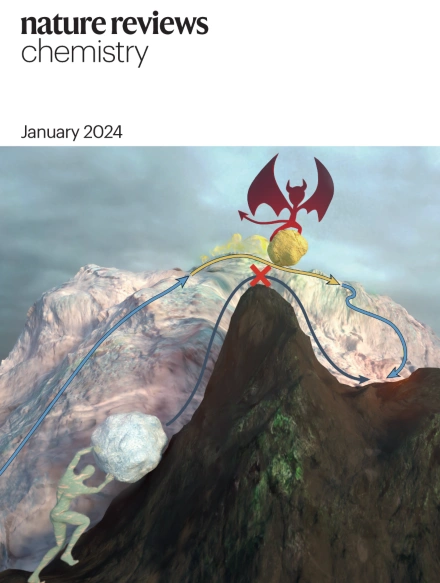Ultrafast spectroscopy of liquids using extreme-ultraviolet to soft-X-ray pulses
IF 51.7
1区 化学
Q1 CHEMISTRY, MULTIDISCIPLINARY
引用次数: 0
Abstract
Ultrafast X-ray spectroscopy provides access to molecular dynamics with unprecedented time resolution, element specificity and site selectivity. These unique properties are optimally suited for investigating intramolecular and intermolecular interactions of molecular species in the liquid phase. This Review summarizes experimental breakthroughs, such as water photolysis and proton transfer on femtosecond and attosecond time scales, dynamics of solvated electrons, charge-transfer processes in metal complexes, multiscale dynamics in haem proteins, proton-transfer dynamics in prebiotic systems and liquid-phase extreme-ultraviolet high-harmonic spectroscopy. An important novelty for ultrafast liquid-phase spectroscopy is the availability of high-brightness ultrafast short-wavelength sources that allowed access to the water window (from 200 eV to 550 eV) and thus to the K-edges of the key elements of organic and biological chemistry: C, N and O. Not only does this Review present experimental examples that demonstrate the unique capabilities of ultrafast short-wavelength spectroscopy in liquids, but it also highlights the broad range of spectroscopic methodologies already applied in this field. Advances in ultrafast short-wavelength sources have enabled major breakthroughs in ultrafast spectroscopy of liquids and solutions. This Review highlights the advances in this field, discusses the new information that can be accessed and presents an outlook on future perspectives.

使用极紫外到软x射线脉冲的液体超快光谱。
超快x射线光谱学提供了前所未有的时间分辨率,元素特异性和位点选择性的分子动力学。这些独特的性质非常适合于研究分子物种在液相中的分子内和分子间相互作用。本文综述了在飞秒和阿秒时间尺度上的水光解和质子转移、溶剂化电子动力学、金属配合物中的电荷转移过程、血红蛋白的多尺度动力学、益生元系统中的质子转移动力学以及液相极紫外高谐波光谱等方面的实验突破。超快液相光谱的一个重要创新是高亮度超快短波光源的可用性,它允许进入水窗口(从200 eV到550 eV),从而进入有机和生物化学关键元素的k边缘:C, N和O.本综述不仅提出了实验实例,证明了液体超快短波光谱学的独特能力,而且还强调了已经在该领域应用的广泛的光谱方法。
本文章由计算机程序翻译,如有差异,请以英文原文为准。
求助全文
约1分钟内获得全文
求助全文
来源期刊

Nature reviews. Chemistry
Chemical Engineering-General Chemical Engineering
CiteScore
52.80
自引率
0.80%
发文量
88
期刊介绍:
Nature Reviews Chemistry is an online-only journal that publishes Reviews, Perspectives, and Comments on various disciplines within chemistry. The Reviews aim to offer balanced and objective analyses of selected topics, providing clear descriptions of relevant scientific literature. The content is designed to be accessible to recent graduates in any chemistry-related discipline while also offering insights for principal investigators and industry-based research scientists. Additionally, Reviews should provide the authors' perspectives on future directions and opinions regarding the major challenges faced by researchers in the field.
 求助内容:
求助内容: 应助结果提醒方式:
应助结果提醒方式:


